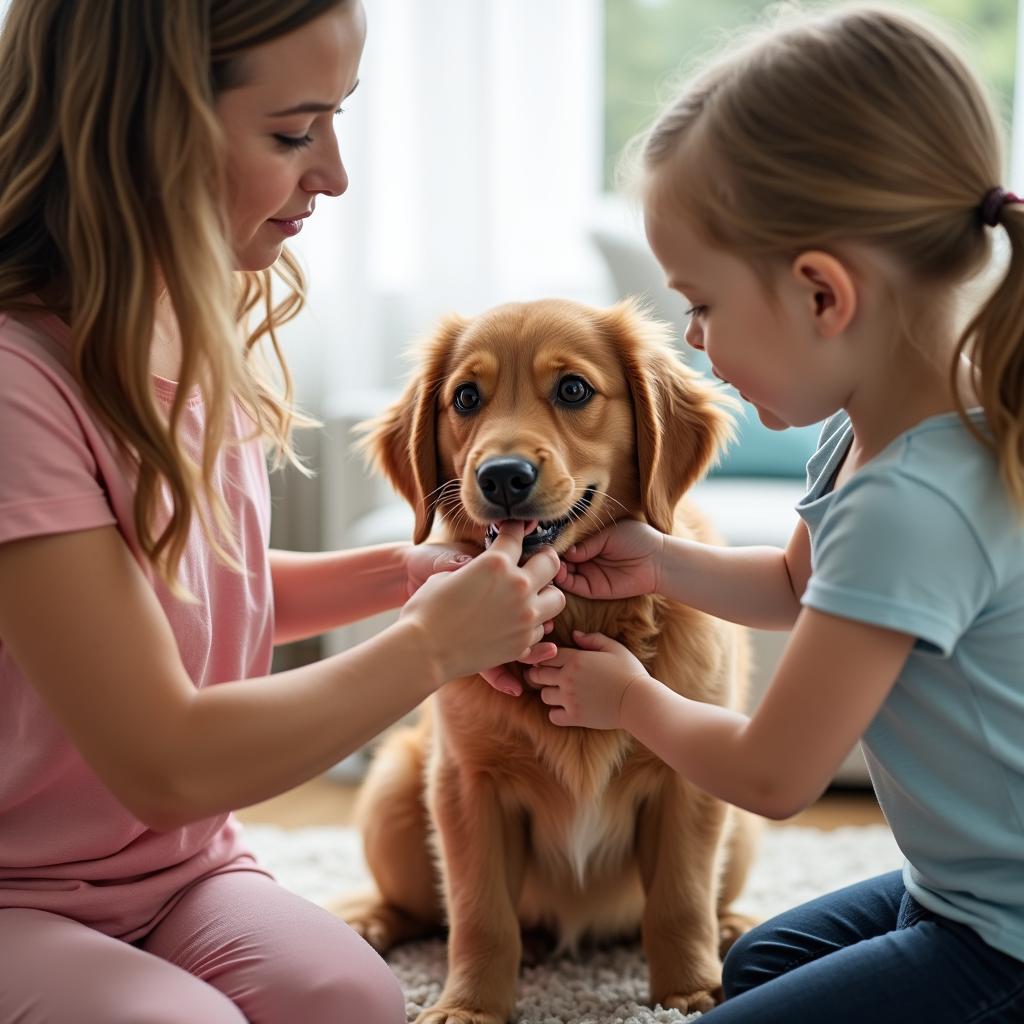The topic of pet ownership and its impacts on society has been a recurring theme in IELTS Writing Task 2, appearing approximately 3-4 times annually. Based on analysis of past exams, questions about pets often focus on comparing benefits and drawbacks or discussing social phenomena related to pet keeping.
Table Of Contents
Analyzing the Task Question
Some people believe that keeping pets is good for children while others think it is dangerous and unhealthy. Discuss both views and give your own opinion.
This is a discussion essay requiring candidates to:
- Examine both positive and negative perspectives on pet ownership for children
- Present and support their personal viewpoint
- Provide relevant examples and explanations
Band 9 Sample Essay
Children’s interaction with pets is a topic that generates diverse opinions, with some advocating its benefits while others express concerns about potential risks. In my view, while certain precautions are necessary, the advantages of pet ownership for young people significantly outweigh the drawbacks.
Those who support children having pets argue that it develops crucial life skills. Caring for animals teaches children responsibility, empathy, and emotional intelligence as they must attend to their pets’ daily needs and understand non-verbal cues. Furthermore, research has shown that growing up with pets can strengthen children’s immune systems and reduce the likelihood of developing allergies later in life.
However, critics raise valid concerns about safety and hygiene. They point out that some animals can be unpredictable and may harm children through biting or scratching. Additionally, pets can transmit various diseases to humans, particularly if proper hygiene practices are not maintained. There are also worries about the financial burden of pet care and the potential emotional trauma if the pet dies.
In my opinion, the educational and developmental benefits of pet ownership make it worthwhile when managed properly. The key lies in choosing age-appropriate pets and teaching children proper animal handling and care techniques. Parents should supervise interactions initially and establish clear guidelines for pet care responsibilities. With these measures in place, children can safely enjoy the numerous benefits of animal companionship while minimizing potential risks.
 Children developing responsibility and empathy through pet care activities
Children developing responsibility and empathy through pet care activities
Band 7 Sample Essay
The question of whether pets are beneficial or harmful to children’s development has become a subject of debate. While some people believe pets can positively influence children’s growth, others are concerned about various risks involved. I believe that pet ownership can be advantageous for children if proper precautions are taken.
Supporters of pet ownership argue that it has several benefits for children. First, taking care of pets helps children learn about responsibility. They need to feed their pets, clean up after them, and ensure their well-being. Second, pets can provide emotional support and companionship, which is important for children’s social development.
On the other hand, there are legitimate concerns about keeping pets. Some parents worry about the risk of animal attacks, especially with larger pets. There are also health concerns, as pets can carry diseases that might affect children. Additionally, some families find it challenging to manage the time and money required for proper pet care.
In my opinion, the positive aspects of having pets outweigh the negative ones. However, it’s important for parents to choose suitable pets based on their children’s age and maturity level. With proper supervision and education about pet care, children can safely enjoy the benefits of animal companionship while avoiding potential dangers.
Essential Vocabulary
- companionship (n) /kəmˈpænjənʃɪp/ – friendship, fellowship
- empathy (n) /ˈempəθi/ – ability to understand others’ feelings
- hygiene (n) /ˈhaɪdʒiːn/ – practices of cleanliness
- unpredictable (adj) /ˌʌnprɪˈdɪktəbl/ – changing suddenly
- trauma (n) /ˈtrɔːmə/ – emotional shock and damage
- age-appropriate (adj) /eɪdʒ əˈproʊpriət/ – suitable for a particular age
- precautions (n) /prɪˈkɔːʃnz/ – preventive measures
- legitimate (adj) /lɪˈdʒɪtɪmət/ – reasonable and acceptable
Practice Suggestions
Consider practicing with these related topics:
- The increasing trend of treating pets as family members
- The impact of pet ownership on urban communities
- The role of pets in reducing stress and loneliness
Share your practice essays in the comments section for feedback and improvement suggestions.


